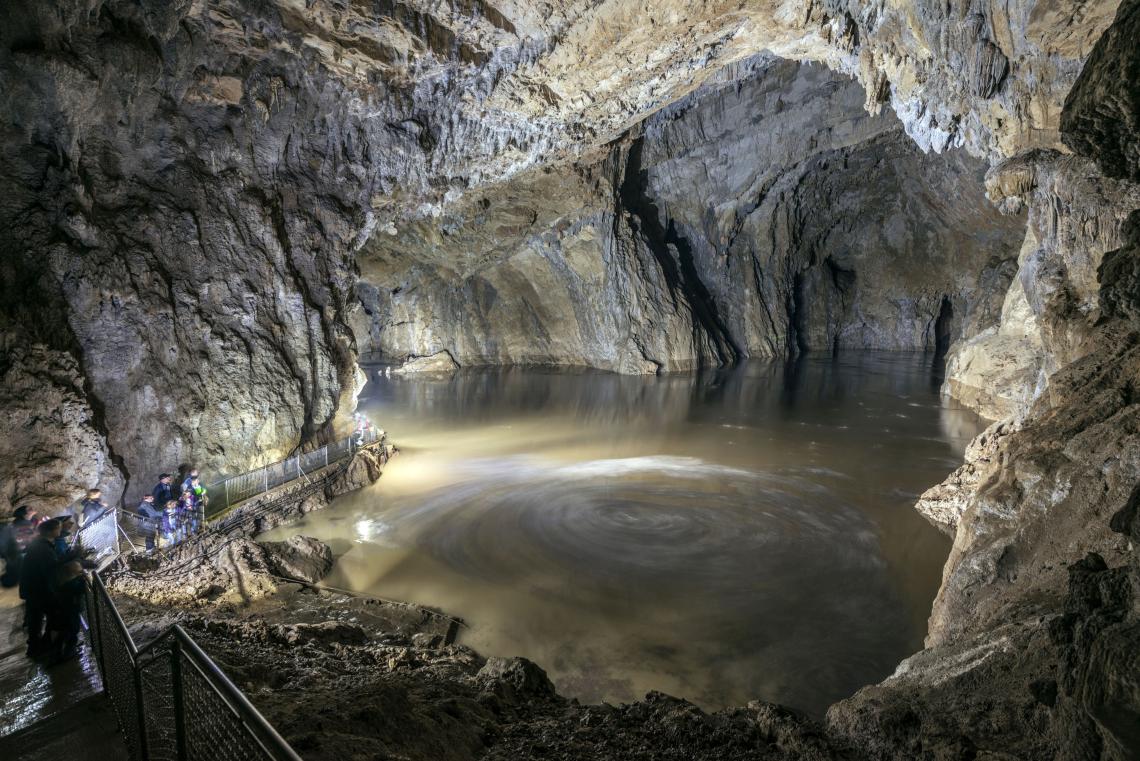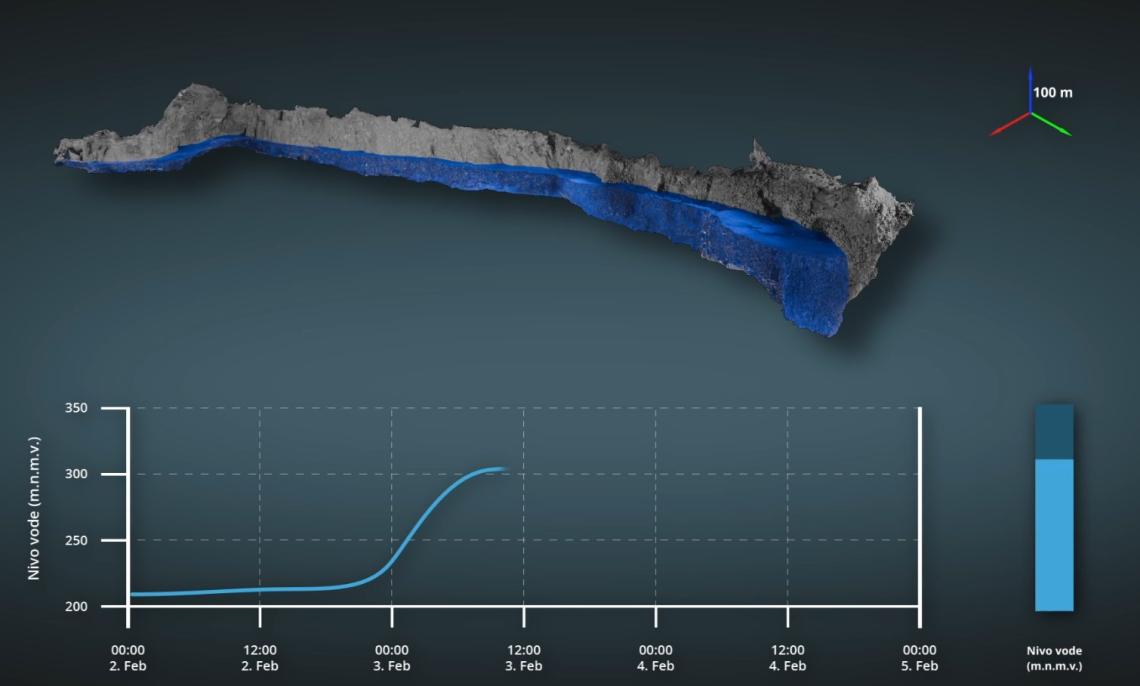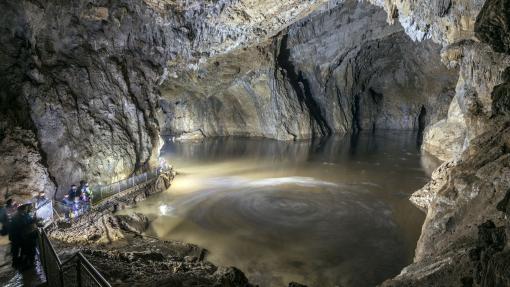The exceptional variability of the Reka River inflow into the Škocjan Caves causes major fluctuations of groundwater levels within the karst system, which occur due to constrictions in the karst channels. A remarkable example is the flood of 2019, when between February 2 and 3, the river’s discharge increased in less than thirty hours from 10 m³/s to over 300 m³/s (Figure 1). Consequently, the water level in Martel Lake rose by more than 80 meters in just twelve hours. After the flood wave passed, the water receded to its pre-flood level within sixteen hours. The water flooded most of the canyon and significantly rose in both the Velika and Mala Valleys. Such flood events introduce vast amounts of sediment and debris, including organic matter, deep into the karst system, greatly affecting the underground ecosystem. Large water fluctuations are also an important factor in the development of karst caves.
Based on this event, a special 3D video model of the flood was created (Figure 2), offering a clear and vivid insight into the dynamics of karst waters. The hydrological data were prepared by researchers from ZRC SAZU, Karst Research Institute, in collaboration with the Škocjan Caves Park Public Agency. The visualization was developed in cooperation with the company Begr8 Media, and it also utilized a detailed 3D model of the cave system created by Richard Walters. The result of this collaboration is a modern and visually engaging presentation that brings to the public an understanding of complex natural processes that unfold in a very short time, often hidden from view. The video shows how the water fills the cave channels and floods the largest chambers within a few hours, giving the viewer a sense of how powerful this natural event truly was.
The 3D video project was carried out as part of the European project Kras–Carso II, within the Interreg Italy–Slovenia program, which promotes cross-border cooperation in the research and management of shared natural heritage. This demonstrates how European projects can bring together scientific work, conservation goals, and modern presentation technologies for the benefit of both the local environment and the wider public.
Through such projects, researchers and park managers not only gain a better understanding of the functioning of the karst aquifer but also make a significant contribution to raising public awareness about the vulnerability of karst systems. Floods such as the one in February 2019 are not only spectacular natural phenomena but also an opportunity to emphasize the importance of protecting the karst landscape and understanding the processes that shape it. The flood visualization combines scientific analysis, modern digital technology, and educational value, going beyond the mere depiction of a natural event. The presentation reinforces the importance of collaboration between research institutions, public agencies, and private creators, showing that cooperation among different disciplines can produce results of both scientific and broader social significance.
The Škocjan Caves, a UNESCO World Heritage Site, thus gain a new tool for presenting their exceptional value while offering visitors a deeper understanding of natural processes. The 3D video of the 2019 flood is not only a visual attraction but also a testament to the importance of combining knowledge and technology in the preservation and interpretation of natural heritage, bringing it closer to the public in a modern and engaging way.

Figure 1: The flooded Müller Hall in the Škocjan Caves.

Figure 2: 3D visualization of the February 2019 flood in the Škocjan Caves, at the moment of the highest water level.

